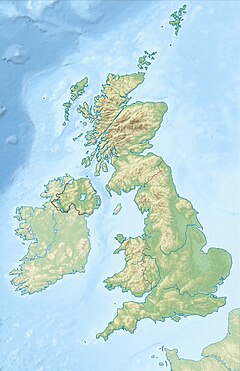Loading AI tools
The Cambridge Interferometer was a radio telescope interferometer built by Martin Ryle and Antony Hewish in the early 1950s to the west of Cambridge (between the Grange Road football ground and the current Cavendish Laboratory). The interferometer consisted of an array of 4 fixed elements to survey the sky. It produced the two Cambridge catalogues of radio sources (the 2C catalogue of radio sources at 81.5 MHz, and the 3C catalogue of radio sources at 159 MHz, building on the work of the Preliminary survey of the radio stars in the Northern Hemisphere at 45 MHz - 214 MHz using the 2-element Long Michelson Interferometer), discovering some of the most interesting astronomical objects known. The telescope was operated by the Radio Astronomy Group of Cambridge University.[1]
| Location(s) | United Kingdom |
|---|---|
| Coordinates | 52°13′N 0°06′E |
| Organization | University of Cambridge |
| Wavelength | 81.5, 159 MHz (3.68, 1.89 m) |
| Telescope style | radio telescope radio interferometer |
Martin Ryle and Antony Hewish received the Nobel Prize for Physics in 1974 for this and other related work.[2]
Wikiwand in your browser!
Seamless Wikipedia browsing. On steroids.
Every time you click a link to Wikipedia, Wiktionary or Wikiquote in your browser's search results, it will show the modern Wikiwand interface.
Wikiwand extension is a five stars, simple, with minimum permission required to keep your browsing private, safe and transparent.
